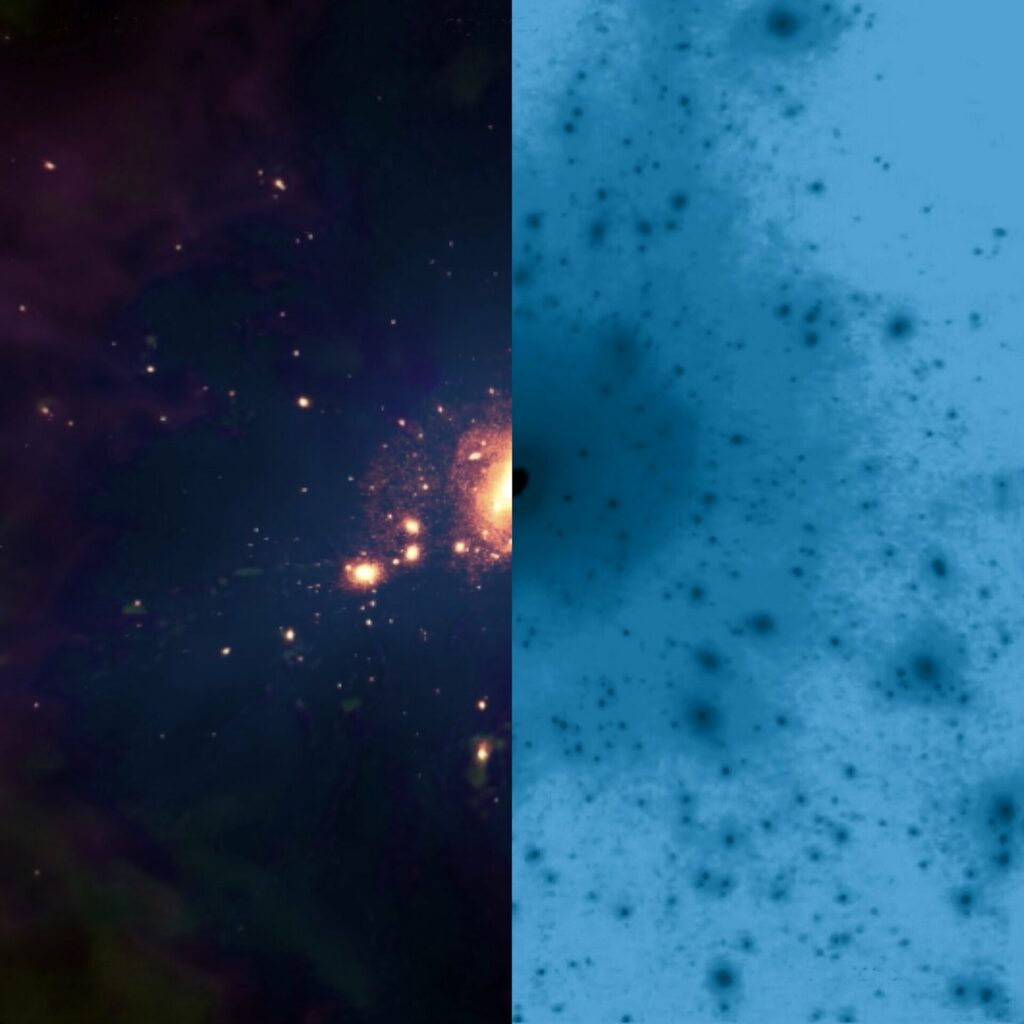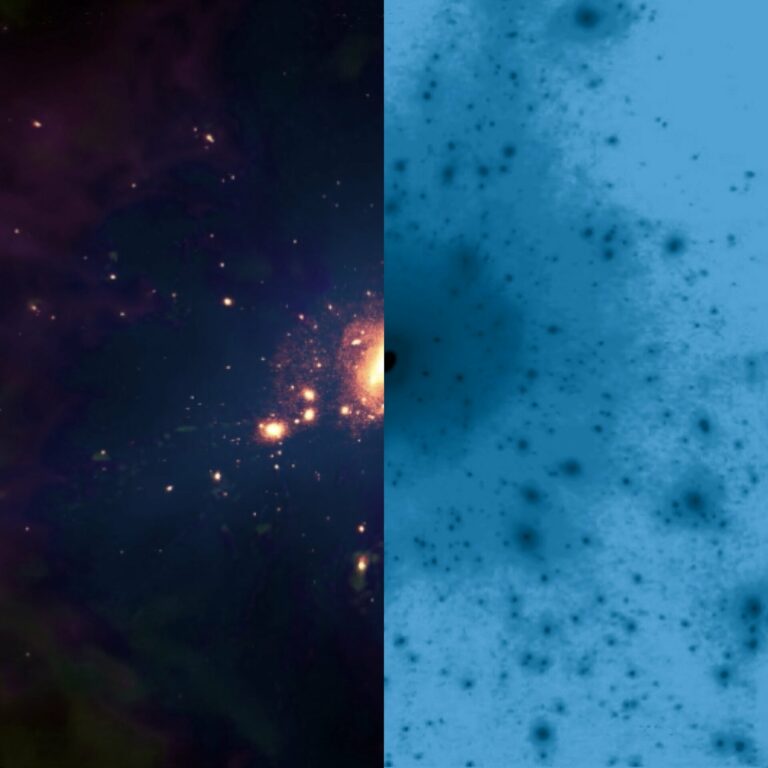Astronomers study the influence of dark matter on the development of galaxies.
Dark matter, constituting approximately 85% of all matter in the universe, differs from ordinary matter in its inability to interact with light directly. This characteristic poses challenges in detecting dark matter, as it does not absorb, reflect, or emit light like ordinary matter does. Instead, dark matter’s presence is deduced from its gravitational influence on visible matter, such as the material forming celestial bodies like stars and planets. Galaxies consist of both dark matter, which forms halos encompassing galaxies, and ordinary matter, primarily concentrated in the central regions where stars are concentrated.

Historically, studies on galactic evolution have focused on ordinary matter despite its minor contribution to a galaxy’s overall mass. Theoretical predictions have long suggested that dark matter plays a significant role in shaping galaxy evolution. Nevertheless, despite numerous research endeavors, there remains no definitive consensus on the impact of dark matter on galactic evolution.
The team at the IAC has successfully confirmed the impact of dark matter on galaxy evolution through observational research, as detailed in the publication in the journal Nature Astronomy.
Laura Scholz Díaz, a pre-doctoral researcher at the IAC and the primary author of the article, explains that while the influence of dark matter on galaxies has been theorized, this study marks the first time it has been observed and studied empirically.
By focusing on the disparity between the mass of stars in a galaxy and the total dynamical mass inferred from its rotation, the team was able to analyze the effects of dark matter on various aspects of galaxy evolution, such as ages, metal content, morphology, angular momentum, and star formation rates.
The research revealed that the behavior of stellar populations within galaxies is not solely determined by the mass of stars, but also by the total mass, including the dark matter component that aligns with estimates of the halo mass.
Furthermore, Ignacio Martín Navarro, an IAC researcher and co-author of the article, highlights that galaxies with similar stellar masses exhibit different evolutionary paths based on the amount of dark matter in their halos. This suggests that the presence of more or less dark matter in a galaxy’s halo significantly influences its evolution and the characteristics of its stellar content.
In the future, the team aims to conduct measurements on stellar populations at varying distances from the galaxy’s center to determine if the properties of stars are influenced by the dark matter halo at all radii. Subsequently, the research will delve into exploring the relationship between dark matter halos and the universe’s large scale structure.
Scholz notes, “These dark matter halos are interconnected by filaments within the cosmic web, a significant part of the large scale structure.” She further explains, “The mass of the halo may impact the galaxy’s characteristics, but this could be attributed to the specific position of each halo within the cosmic web. Our upcoming research will focus on examining the influence of this large scale structure within our current study context.”
This study is centered around 260 galaxies from the CALIFA project, an international initiative in which the IAC actively participates under the leadership of Jesús Falcón Barroso, another co-author of the publication.
Falcón Barroso highlights, “This survey provides spectral data and offers extensive spatial coverage of galaxies.” He adds, “These galaxies were observed in a high-resolution setup to obtain precise measurements of their kinematic properties, enabling us to meticulously study the stars’ movements and deduce the total masses of the galaxies.”
Do not forget to share your opinion with us to provide you with the best posts




0 Comments